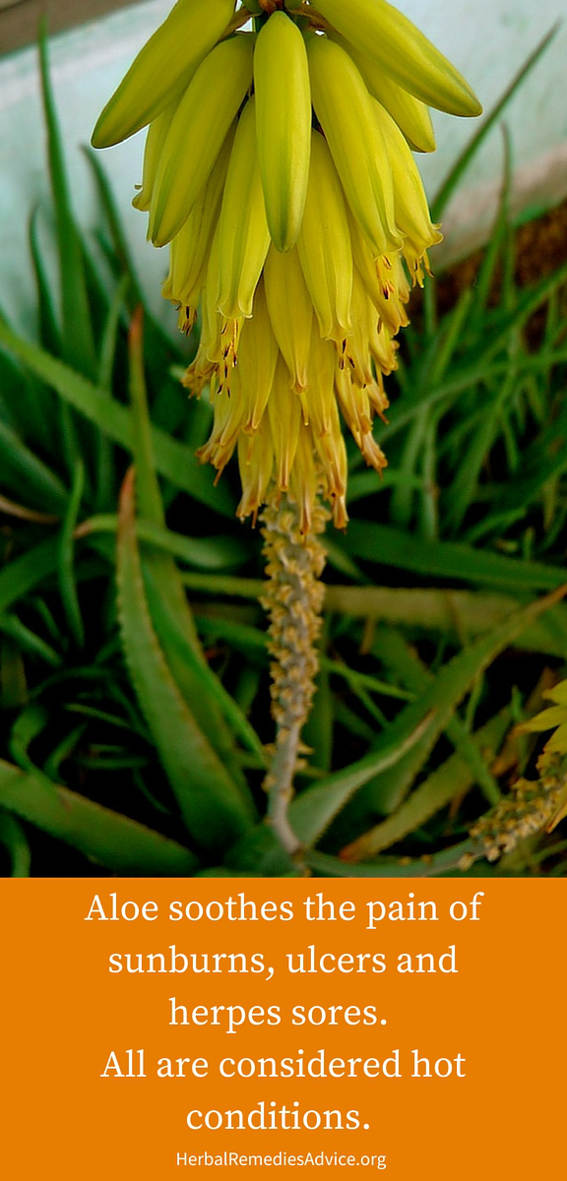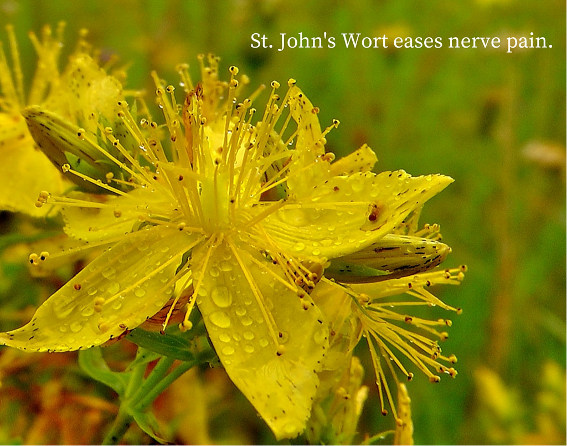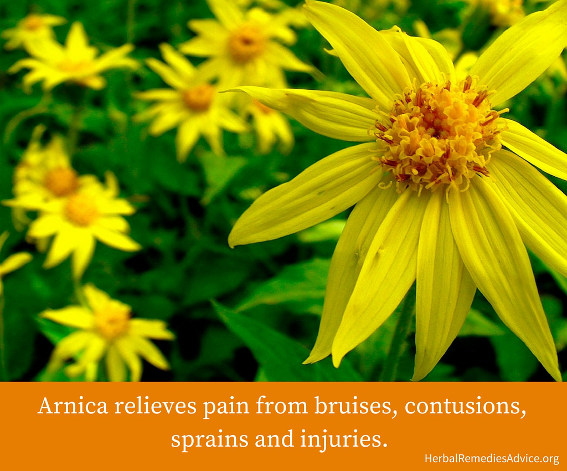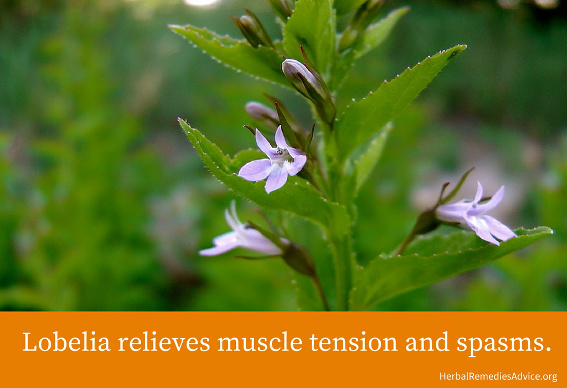Natural Pain Relief
Rosalee de la Forȇt
Pain, the Great Motivator
The sensation of pain is a great motivator for people to seek natural pain relief. Whether you practice herbalism for your friends and family or are a clinician, pain is one of the most common complaints we hear.
Most of us were raised to take over-the-counter (OTC) medicine when we experienced pain. These pills are usually cheap, easy to acquire and take, and are often effective in the short term. The obvious problems associated with OTCs are habitual use due to recurring pain (since they never address the real problem), which gives rise to a myriad of undesirable side effects ranging from digestive problems to death.
It is common in western culture to view pain as an inconvenience. Many people I see want a safe herbal equivalent to OTCs so they can get back to their normal lives. It often takes a lot of coaching on my part to change their ideas and approaches to pain.
Sometimes this is entirely unsuccessful. I have had clients who don’t want to change how they eat or who don’t want to pay for multiple sessions in manual therapy. Instead they just want something to take the pain away. I believe people are free to make their own health choices. If they don’t want to address the underlying problem for their pain but are seeking safer alternative to over-the-counter pharmaceuticals, I help them find this solution.
Many times people have sought me out because they want a more holistic approach to their pain and are open to more drastic changes in their lives. I often work on a two-pronged approach, doing what I can to stop the pain now as well as working on the underlying issue.
Many people new to herbalism are simply looking for the safe herbal equivalent to Tylenol and they will have a difficult time finding it. This difficulty gives rise to the erroneous idea that herbs are not effective for pain. As far as I know there isn’t that one (legally available and safe) herb that will stop all pain. Instead, herbs are highly specific to the type of pain. Herbalists will be much more successful in treating pain if they can differentiate the type of pain and the cause of the pain.
This article is going to examine how we look at pain using traditional humoral and energetic markers. Having been trained as a planetary herbalist with a basic understanding of humoral western herbalism, Ayurveda and Traditional Chinese Medicine, the following draws on my own hodgepodge understanding of all these traditions. I will strive to present it in a common language for general understanding.
Before we can suggest herbs for pain we must know a lot more about the quality of the pain, the onset and severity of the pain, and the location of the pain. Please keep in mind there are a lot of different kinds of pain. Questions asked for chronic pain will differ significantly from questions regarding an acute injury. I trust the reader can draw these apart depending on the situation.
Although I will highlight some of my favorite herbs for pain, this article will be more about understanding the energetic qualities of pain, rather than a general review of the materia medica used for pain. However, I won’t stray too far into the philosophical mechanisms of pain and it is my hope that the reader will leave with practical applications for natural pain relief.
Natural Pain Relief: Determining the Quality of the Pain
For many laypeople pain is pain.
For the traditional herbalist “pain” is a general word that needs to be explored more fully. To better understand the quality of pain we can look for insights into the thermal energetics (cold vs. hot), the humidity (damp vs. dry), whether the pain is from excess or deficiency, and whether there is an influence of spasms (wind) or of stagnancy.
Thermal Energetics (Cold vs Hot) in Natural Pain Relief
Understanding whether the pain is influenced by hot or cold can be an important distinction in differentiating pain. Pain being influenced by cold or hot is not a woo-woo or ethereal concept. People with arthritis pain will tell you it’s worse in the winter when it’s cold. Or someone may know they tend to get pounding headaches in the heat of the summer. Sometimes pain induced by an imbalance of temperature can be even more obvious, like pain from a sunburn, which typically feels hot.
Here are some general questions one may ask to determine the "temperature" of the pain.
Do you prefer cold/warm temperatures? Is your pain increased with coldness/warmth? Is pain ameliorated with cold/warmth? Do you notice more discomfort in the winter/summer? Palpating the specific area of pain, does it feel cold? Does it feel warm? If pain is systemic, do you tend to feel cold or warm?
Of course answers are seldom black and white. The person may feel cold in their extremities while the area of pain is hot, or vice versa. In general we want to address acute situations before more chronic or constitutional considerations.

Natural Pain Relief Associated with Coldness
The person who has systemic pain associated with coldness generally has a pale complexion and may be cool to the touch. They may have a dislike or even fear of the cold. I often hear from these people that they have trouble sleeping at night because they are so cold. They typically are wearing more clothes than anyone else in the room. Their tongue may be pale in color. If they have a coating on the tongue it will tend to be white. Their pulse may be slow. Pain associated with coldness tends to be chronic like arthritis or pain from fibromyalgia. The pain may be be dull or achy and constant.
Plan of action:
Generally these people can benefit from warming herbs for pain. Warm teas, cooked whole foods with lots of spices and warm baths may all be helpful. Circulatory stimulants are commonly used for this type of pain and include ginger (Zingiber officinale), turmeric (Curcuma longa), cayenne (Capsicum spp.), bee balm (Monarda spp.).
Natural Pain Relief Associated with Heat
Signs of constitutional or systemic heat may include a completely red face, loud voice, fast pulse, red tongue with possible yellow coating. They may thrive in cooler temperatures and complain of wilting in higher temperatures. Other heat signs in the body may include ulcers on the lips, mouth, stomach or intestines.
Pain associated with heat might be radiating, throbbing, hot to the touch, and intense. Acute injuries often have some element of heat to them. Sprains or burns will often be warm to the touch.
Plan of action:
For systemic pain, bitter and heat-clearing herbs for pain may be of benefit here. Herbs containing salicylic acid such as willow (Salix spp.) and meadowsweet (Fillipendula ulmaria) fall into this category nicely. Nerve pain often falls into this category and herbs like St. John’s Wort (Hypericum perfoliatum) and Cow Parsnip (Heracleum spp.) can be of great benefit.
Pain associated with heat often has some element of inflammation present. We have amazing anti-inflammatory herbs for pain such as turmeric (Curcuma longa), rosemary (Rosmarinus officinalis), St John’s Wort (Hypericum perfoliatum), licorice (Glycyrrhiza glabra), and on and on and on. Usually diet and lifestyle will need to be reviewed as well.
Acute injuries (sprains, strains, bruises) benefit from the topical application of herbs for pain such as liniments, poultices, fomentations etc. Hydrotherapy, which has a long history of traditional use, and herbal baths/soaks can be of great benefit as well. Blood-moving herbs for pain can both relieve pain and reduce swelling. I often reach for a blend of arnica-infused oil and arnica liniment for acute pain in closed skin traumas.
For visibly hot traumas like burns, cooling herbs for pain work exceptionally well. Even someone who couldn’t identify a dandelion correctly can tell you that aloe relieves the pain of burns. I also use aloe for herpes sores as it can stop a blister from forming, can relieve the pain and help to heal the blister.
Ice is often recommended in western science for acute injury. Ice is topically anesthetic and will temporarily numb pain. It constricts the tissue, slows circulation to the site of the injury and may lessen swelling.
Traditional Chinese Medicine historically does not recommend ice. I also do not recommend ice even in acute injury. Ice congeals the blood and creates stagnation. A recent study demonstrated that icing an injury stopped the growth hormone, which is essential to healing.
Discussing the topic of icing an injury among modern day herbalists raises a lot of controversy from all sides of the issue. The best we can do is research the issue from different perspectives and then rely on our own experience from personal application.


Humidity (Damp vs Dry) in Natural Pain Relief
Natural Pain Relief Associated with Dampness
Pain associated with dampness is pain increased with humidity (humid environments, rain) and a feeling of heaviness, especially in the lower limbs. Dampness can often be a component of arthritis pain. The area affected may feel damp and appear swollen. Pushing on the tissues may leave an indentation for an extended period of time.
Plan of action:
Dampness usually presents with a hot or cold component that also needs to be addressed for the individual (see above). Dampness can accumulate through environmental factors, such as living in a damp environment, or as a result of cold digestion. Herbs for pain that drain dampness (diuretics) or transform dampness, as well as dietary intake can also be an important part of controlling dampness.
Dampness may be involving the lymphatic system and in these cases herbs that move the lymph are helpful. Sweating therapies can also be of great benefit.
Natural Pain Relief Associated with Dryness
Dryness can also manifest with arthritis pain or joint pain. Joints may crack and have a sensation of friction. The person will also most likely have other signs of dryness such as dry hair, dry skin or dry mucosal membranes.
Plan of action:
Demulcent herbs or yin tonics and an increased intake of healthy fats and essential fatty acids are indicated.
Excess vs Deficiency in Natural Pain Relief
Natural Pain Relief Associated with Excess
Chronic excessive pain will most likely be paired with someone who tends toward an excessive constitution. The pain may be increased after eating and be aggravated by pressure or touch. Eliminating herbs such as those found under the alterative classification can be helpful in treating constitutionally.
Acute injuries such as sprains will fall under this category as well.
Natural Pain Relief Associated with Deficiency
Pain associated with deficiency may be dull, chronic, relieved by pressure, better after eating and accompanied with fatigue. These people can use building and tonifying therapies such as adaptogen herbs, wholesome foods, blood builders etc.
Movement (Wind) vs Stagnation in Natural Pain Relief
Natural Pain Relief Associated with Wind
Pain associated with wind is pain caused by spasming or constricted tissues. Pain that moves around may be due to wind.
Plan of action:
Herbs for pain excel at relieving pain associated with constriction and spasming whether it is muscle spasms in the back or neck, menstrual cramping, or even pain associated with the passing of kidney stones. From a modern perspective we know that many people are deficient in magnesium and symptoms of this include muscle spasms.
Applying heat and herbs for pain topically and taking antispasmodic herbs internally can work wonders on relieving pain. When indicated, magnesium supplements can help relieve pain and the underlying cause of the pain. Antispasmodic herbs I use frequently include valerian (Valeriana officinalis), lobelia (Lobelia inflata) and cramp bark (Viburnum opulus.)
Natural Pain Relief Associated with Stagnation
Stagnant pain is usually fixed and throbbing. The person can point with their finger to the exact location that is a problem. The area may feel hot or cold.
Plan of action:
Move the stagnancy with a category of herbs called blood movers in Traditional Chinese Medicine and that often fall under the category of emmenagogues in western herbalism. Stagnancy is usually accompanied by a deficiency or an excess as well as a thermal imbalance and all need to be addressed.
Natural Pain Relief: Determining the Onset of the Pain
Knowing the onset of pain can help determine the underlying cause. It can also help the practitioner understand the severity of the situation.
One of the most powerful gifts we can give our clients is the gift of awareness. Helping a person to be conscious of their body, knowing how the pain starts to manifest, what triggers it and what makes it better can go a long way in empowering them to get out of pain.
Red flags for pain include sudden pain down the left arm accompanied with nausea (possible heart involvement), sudden vomiting followed by pain (possible appendix troubles), severe lower back pain that is constant and accompanied by a fever (possible kidney infection), sudden pain accompanied by any other persistent symptoms such as vomiting, extreme fever, constant diarrhea, bladder dysfunction etc. All of these should be handled by someone with the appropriate experience, most likely a medical physician.

Natural Pain Relief: Determining the Severity of the Pain
The subjective experience of pain is often measured on a 1-10 pain scale. Here’s how I like to break this down.
1 - 3 pain scale: Pain is noticeable but the person is able to ignore it for the most part and perform regular functions of daily life. Not normally a big concern for them.
4 - 7 pain scale: Pain encroaches on their ability to perform daily life activities. Oftentimes they need some sort of pain management in order to function or else they must limit offending activities.
8 - 10 pain scale: Life is becoming intolerable. Pain inhibits their normal daily life activities. Bed rest or large doses of pain medications are necessary.
This pain scale can fluctuate tremendously and apply to constant pain or intermittent pain. Pain may be worse in the morning, worse at night, worse with a specific activity, worse at a particular time of the month in a particular season and so on.
Getting a subjective record of pain is important not only for understanding the current situation but also for recording improvement or deterioration. It’s very common for people to report “no change” in their pain, although they show significant improvement when asked to quantify their pain on a scale. Being able to demonstrate this to a client will help them to be optimistic about their path to wellness and keep them on track.
Natural Pain Relief: Determining the Location of the Pain
The location of pain can give us an obvious understanding of whether we are dealing with a headache or an ulcer. Very helpful!
In Traditional Chinese Medicine the location of pain can help point to the underlying problem. Studying acupuncture meridians can be a helpful field of study. Some herbs for pain are specific for particular areas of pain and specific types of pain. Studying simples and herbalism through the eyes of an eclectic physician can also be a useful guide to relieving pain.
Be Mindful of Oversimplification
The energetic considerations above are presented in a "black and white" format for an introductory understanding. People seldom present with one manifestation and are more commonly seen with a multitude of influences. An herbal formula created specifically for a particular person is often the most powerful means to stopping pain.
Instead of a dogmatic truth to follow, I offer the above guidelines as a general understanding to a particular person’s pain. These basic guidelines may provide additional assistance when a pain protocol is not working.
For example, if someone consistently relied on willow bark as a general pain reliever but found that it wasn’t working in a particular instance, a further look into to the energetics of the situation as well as the person will hopefully guide them towards greater success.
I want to acknowledge that there are also low-dose botanicals that can be used to relieve severe pain. The application of these potentially toxic plants are beyond the scope of this article.
The Underlying Cause
When someone’s major complaint is pain I am ideally applying a two-pronged approach. Of course I want to relieve their pain soon, but I also want to address the underlying cause of the pain. The reasons for pain are as varied as the people you’ll see so I will cover only a few reasons that I see regularly.
Sometimes by addressing the pain energetically we can also address the underlying cause. For example, if a person is experiencing pain because they have excessive coldness then applying warming and nourishing/building therapies may relieve their pain as well as the cause of their pain.
Insulin resistance is rampant in this society and is an inflammatory disease by nature. It can be a factor in a number of pain problems such as gout, kidney stones and even arthritis.
Food intolerances can also lead to a variety of painful conditions, including arthritis, debilitating bowel problems and headaches.
Structural imbalances can play a large role in pain symptoms. Referring people to trusted specialists in this area can be very useful. This may include structural integration, yoga, pilates, network spinal analysis, feldenkrais etc.
Stress and emotional challenges can play a huge role in pain and should never be overlooked.
Conclusion for Natural Pain Relief
Acute or chronic pain can be a vulnerable experience. The more we know about the pain the better we can help to both relieve a person’s current symptoms and prevent the pain from reoccurring.
This article was originally published in the Plant Healer Magazine.
https://www.herbalremediesadvice.org/natural-pain-relief.html

No comments:
Post a Comment
All comments welcome but advertising your own service or product will unfortunately result in your comment not being published.